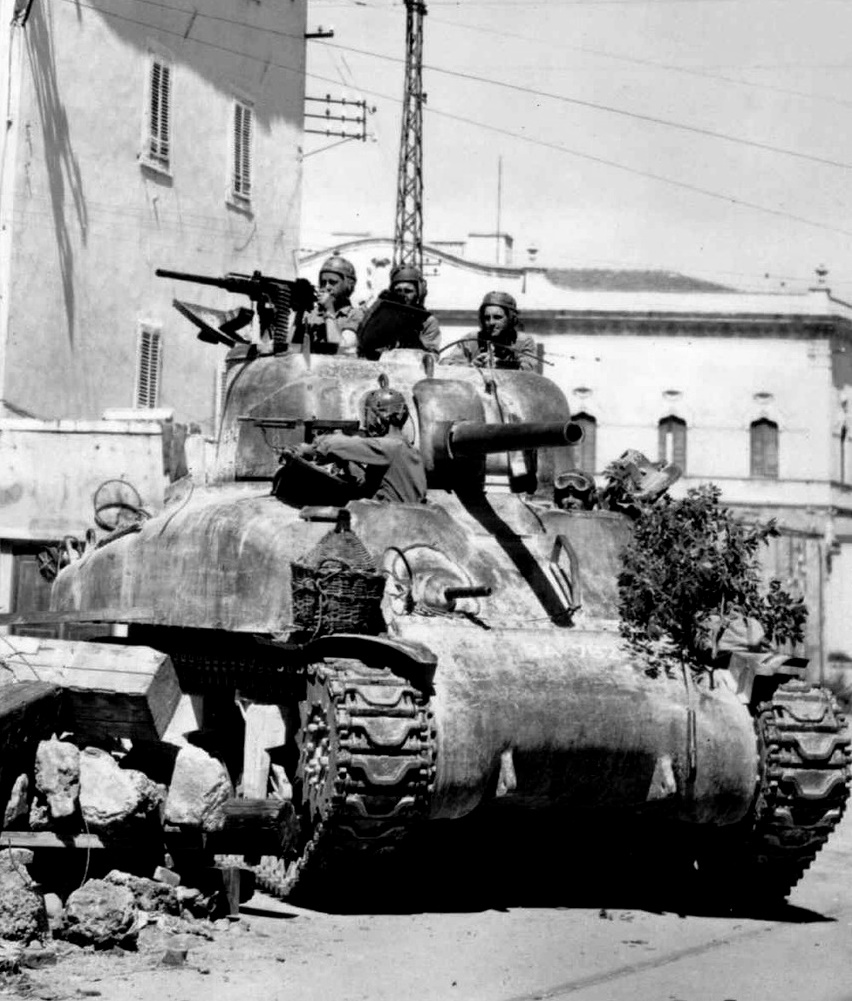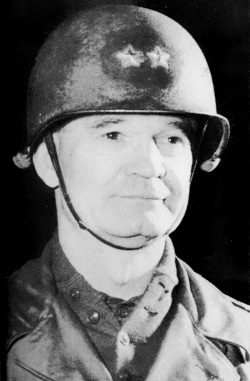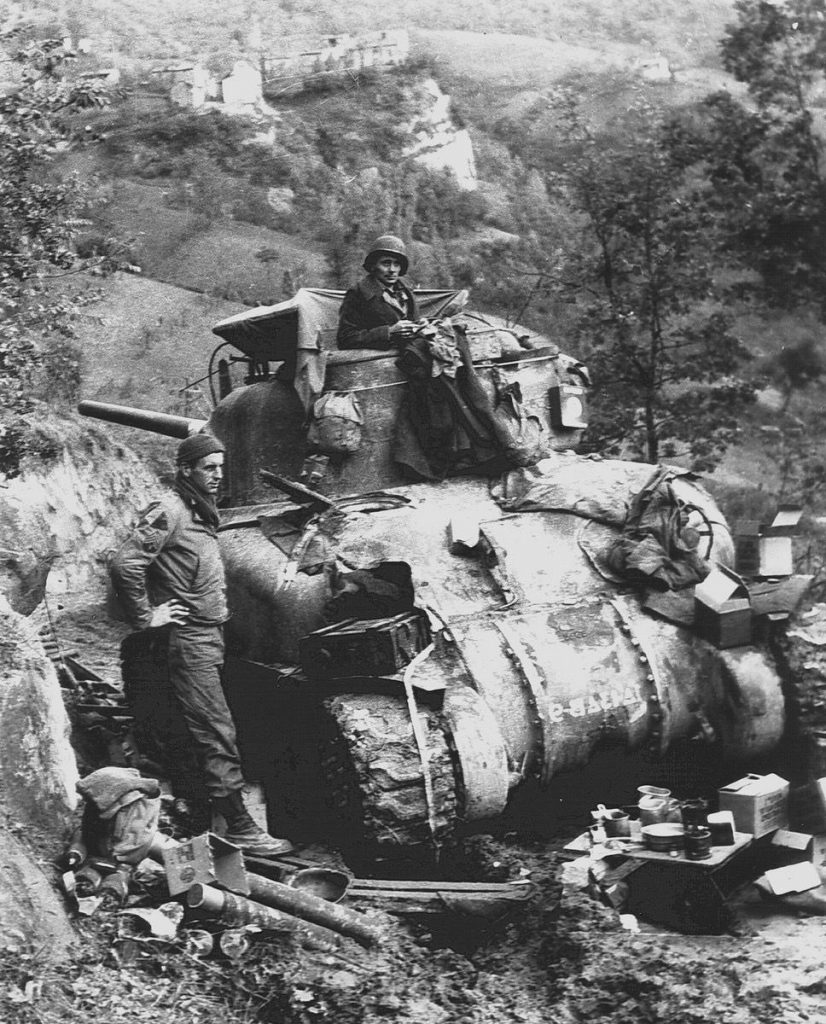Document Source: Order of Battle US Army World War Two, War Department, Washington DC, Combat Narrative, US Army World War Two, Shelby L. Stanton, Presidio Press, Novato, California, USA, 1984

 Col Daniel Van Voorhis took a cadre of 175 officers and enlisted men from Fort Eustis to Fort Knox in February 1932 and established a Provisional Armored Car Platoon. This was based on an earlier effort but was predicated on a new Cavalry Regiment TO&E (Table of Organization and Equipment) which was published that year. Also published but never implemented, was a Cavalry Division TO&E which reflected the then unnatural assimilation of machines into the Horse Cavalry. Van Voorhis’s cadre and platoon became the kernel for the 7th Cavalry Brigade, which went active on March 1, 1932, at Fort Knox. At first, it was nothing more than a headquarters detachment and the Armored Car Platoon. On January 3, 1933, the 1st Cavalry Regiment was relieved from assignment to the 1st Cavalry Division and was moved from Fort Russell (today Warren AFB) to Fort Knox. The earlier Mechanized Platoon was incorporated into the new regimental TO&E, and the result was the 1st Cavalry Regiment (Mechanized), which went active on January 16, 1933. Van Voorhis added the 13th Cavalry Regiment; the 68th Field Artillery Battalion; the 7th Reconnaissance Squadron; the 7th Signal Troop; the 4th Medical Troop; the 47th Engineer Troop and the 17th Quartermaster Battalion. The 7th Cavalry Brigade was fully formed.
Col Daniel Van Voorhis took a cadre of 175 officers and enlisted men from Fort Eustis to Fort Knox in February 1932 and established a Provisional Armored Car Platoon. This was based on an earlier effort but was predicated on a new Cavalry Regiment TO&E (Table of Organization and Equipment) which was published that year. Also published but never implemented, was a Cavalry Division TO&E which reflected the then unnatural assimilation of machines into the Horse Cavalry. Van Voorhis’s cadre and platoon became the kernel for the 7th Cavalry Brigade, which went active on March 1, 1932, at Fort Knox. At first, it was nothing more than a headquarters detachment and the Armored Car Platoon. On January 3, 1933, the 1st Cavalry Regiment was relieved from assignment to the 1st Cavalry Division and was moved from Fort Russell (today Warren AFB) to Fort Knox. The earlier Mechanized Platoon was incorporated into the new regimental TO&E, and the result was the 1st Cavalry Regiment (Mechanized), which went active on January 16, 1933. Van Voorhis added the 13th Cavalry Regiment; the 68th Field Artillery Battalion; the 7th Reconnaissance Squadron; the 7th Signal Troop; the 4th Medical Troop; the 47th Engineer Troop and the 17th Quartermaster Battalion. The 7th Cavalry Brigade was fully formed.
Van Voorhis remained in command until September 1938, when he was promoted to command the V Corps at Indianapolis, Indiana. Chaffee took over from Van Voorhis. On May 7, 1940, the 7th Cavalry Brigade took part in the Louisiana Maneuvers at Monroe Louisiana, which were instrumental in developing the armored division concept. The maneuvers concluded on May 27, 1940. The brigade returned to Fort Knox four days later and preparations began to expand the brigade into a tank division. After the brutal trench warfare of World War I, the US was looking for new ways to engage in armed conflict.
As the German Army invaded Belgium Luxembourg and Holland (the low countries) and France, the US military hierarchy realized that an armored division was essential for a modern army. While training outside of Alexandria Louisiana, the commanders of the 7th Cavalry Brigade met in a high school basement to discuss the creation of an American armored division. Gen Frank M. Andrews, Gen Adna R. Chaffee, Gen Bruce Magruder, and Col George S. Patton Jr agreed to recommend to Washington that the US Army established its first tank division. On June 10, 1940, during a conference with the Chief of Staff, it was decided to create an Armored Force in the Army and two weeks later Gen Adna R. Chaffee was given the order to head the creation of America’s first tank division. On July 15, 1940, the 1st Armored Division, largely an expanded and reorganized version of the 7th Cavalry Brigade, was activated at Fort Knox under the command of Gen Bruce Magruder. The 1st Cavalry Regiment was redesignated 1st Armored Regiment and the 13th Cavalry Regiment was redesignated 13th Armored Regiment under the 1st Armored Brigade, 1st Armored Division. For more than two years after its activation, the 1-AD trained at Fort Knox and the division pioneered and developed tank gunnery and strategic armored offensives while increasing from 66 medium-sized tanks to over 600 medium and light armored vehicles.
Order of Battle – 1-AD (Activation)
HHC, 1st Armored Division
HHC, 1st Armored Brigade
1st Armored Regiment (Light)
13th Armored Regiment (Light)
69th Armored Regiment (Medium)
68th Armored Field Artillery Regiment
6th Armored Infantry Regiment
27th Field Artillery Battalion (Armored)
16th Engineer Battalion (Armored)
81st Armored Reconnaissance Squadron
13th Quartermaster Battalion (Armored)
19th Ordnance Battalion (Armored)
47th Medical Battalion (Armored)
141st Signal Company (Armored)
1-AD – Elaboration – Creation – Perfection
The division was trained at Fort Knox Kentucky. It was an experiment in a self-supporting, permanent fighting unit with tanks as the nucleus. This experiment in a self-sustaining blitzkrieg force had never been tried before, and the troops necessary for such an organization were drawn from many army posts. When the organization was completed, the division had tanks, artillery, and infantry strength. In direct support were tank destroyer, maintenance, medical, supply, and engineer battalions. But bringing the division up to its full quota of tanks, guns, and vehicles was difficult. Although new equipment was received almost daily, the division had until March 1941, only nine ancient medium tanks and the main armament of the nine was a 37-MM gun.
To become experts with their newly acquired tanks, half-tracks, and guns, most of the division attended the Armored Force School at Knox. The students stood reveille at 0400 sat at attention during class and at 1600 rushed to the nearest PX for a bottle of beer, which helped counteract the hot summer weather. Every day, some units attacked from the steel observation tower called ‘OP Six’ to capture some part of a 25 square mile patch of Kentucky brush and gullies. The troops made three-day road marches, scraped and polished their vehicles for Saturday morning inspections, sweated out the lines at the bus station, and occasionally dropped by Benny’s or Big Nell’s, the most easily accessible civilian nightspots.
With more than a year’s training behind them, the division left in September 1941, for three months of maneuvers in Louisiana. The day before Pearl Harbor (December 7, 1941) the division was back at Fort Knox. The draftees had proved themselves as soldiers in the maneuvers. They looked forward to discharges after their year’s service and the regular army men expected furloughs. Training took on a new intensity. The division was reorganized, and all tanks, both medium, and light were put into two armored regiments, the 1-AR, and the 13-AR. A third armored field artillery battalion, the 91-AFAB, was formed, and the 701-TDB was organized and attached to the division.
A few months later, in March 1942, the division was en route to the Fort Dix New Jersey, staging area under command of Maj Gen Orlando Ward. Ward relieved Magruder who had commanded the division since its organization. It was a ‘secret’ move, but no surprise to the townspeople of Washington Court House Ohio, who had waited four days for the division to arrive. There were movies, food, hot water for shaving, and a mammoth banner saying ‘Welcome First Armored Division’ across the main street. At Dix, there were 36-hour passes to New York and motor parks jammed with division vehicles. Nobody knew when or where the division was going. At Fort Knox, the division purposely renamed ‘First Armored Force’, participated in the Technicolor short movie – The Tanks Are Coming. It deployed then to participate in the VII Corps Maneuvers (August 18, 1941). Once the maneuvers concluded, the 1st Armored Division moved on August 28, 1941, and arrived at Camp Polk for the Second Army Louisiana Maneuvers (September 1, 1941). The division moved then to Fort Jackson (October 30, 1941) to participate in the First Army Carolina Maneuvers and returned to Fort Knox on December 7, 1941, but started to prepare for deployment overseas instead of returning to garrison.
In fact, the 1st Armored Division was ordered to Fort Dix to await their deployment overseas. The division’s port call required them to board the RMS Queen Mary at the New York POE at the Brooklyn Army Terminal on May 11, 1942. They arrived in Northern Ireland on May 16 and trained on the moors until they moved on to England on October 29, 1942. At the end of the training period Combat Command B, with about one-half of the division’s troops, was alerted to leave Ireland and prepare for an overseas trip where ‘You’ll get off fighting’.
Alerted for the invasion the following units ready for the next were the 1/1st Armored Regiment, the 1/13th Armored Regiment, the 2/13th Armored Regiment, the 6th Armored Infantry Regiment (-), the 27th Armored Field Artillery Battalion, Baker Co, 701st Tank Destroyer Battalion, Charlie Co, 701st Tank Destroyer Battalion, the 16th Armored Engineer Battalion (Det), the Supply Battalion, the Maintenance Battalion, the 47th Armored Medical Battalion, and the 141st Signal Company.
1-AD – Combats
 The unit’s first contact with an enemy was as part of the Allied invasion of Northwest Africa, Operation Torch, on November 8, 1942. Elements of the division were part of the Eastern Task Force and became the first American armored division to see combat in World War II. Combat Command B landed east and west of Oran under the command of Gen Lunsford E. Oliver and entered the city on November 10, 1942. On November 24, CCB moved from Tafaroui Algeria to Bedja Tunisia, and raided the Djedeida Airfield the next day. Djedeida was finally conquered on November 28. CCB moved southwest of Tebourba on December 1, and engaged German forces on the El Guessa Heights on December 3, but its lines were pierced on December 6. CCB withdrew to Bedja with heavy equipment losses on December 10/11 and was placed in reserve. CCB next attacked the Ousseltia Valley on January 21, 1943, and cleared that area until January 29 when it sent to Bou Chebka. The 1-AD arrived at Maktar on February 14. CCA fought at Faid Pass commencing on January 30 and advanced to Sidi Bou Zid, where it was pushed back with heavy tank losses on February 14, and had elements isolated on Djebel Lessouda, Djebel Kasaira, and Garet Hadid. CCC, which had been constituted on January 23 to raid Sened Station on January 24, advanced towards Sbeita, and counterattacked to support CCA in the Sidi Bou Zid area on February 15, but was repulsed with heavy losses. The division withdrew from Sbeita one day later, but by February 21, CCB contained the German attack toward Tebessa. The German withdrawal allowed the division to recover the Kasserine Pass on February 26 and assemble in reserve.
The unit’s first contact with an enemy was as part of the Allied invasion of Northwest Africa, Operation Torch, on November 8, 1942. Elements of the division were part of the Eastern Task Force and became the first American armored division to see combat in World War II. Combat Command B landed east and west of Oran under the command of Gen Lunsford E. Oliver and entered the city on November 10, 1942. On November 24, CCB moved from Tafaroui Algeria to Bedja Tunisia, and raided the Djedeida Airfield the next day. Djedeida was finally conquered on November 28. CCB moved southwest of Tebourba on December 1, and engaged German forces on the El Guessa Heights on December 3, but its lines were pierced on December 6. CCB withdrew to Bedja with heavy equipment losses on December 10/11 and was placed in reserve. CCB next attacked the Ousseltia Valley on January 21, 1943, and cleared that area until January 29 when it sent to Bou Chebka. The 1-AD arrived at Maktar on February 14. CCA fought at Faid Pass commencing on January 30 and advanced to Sidi Bou Zid, where it was pushed back with heavy tank losses on February 14, and had elements isolated on Djebel Lessouda, Djebel Kasaira, and Garet Hadid. CCC, which had been constituted on January 23 to raid Sened Station on January 24, advanced towards Sbeita, and counterattacked to support CCA in the Sidi Bou Zid area on February 15, but was repulsed with heavy losses. The division withdrew from Sbeita one day later, but by February 21, CCB contained the German attack toward Tebessa. The German withdrawal allowed the division to recover the Kasserine Pass on February 26 and assemble in reserve.
The division moved northeast of Gafsa on March 13 and attacked in heavy rains on March 17 as CCA took Zannouch, but became immobilized by rain the next day. The 1-AD drove on Maknassy (March 20), fought the Battle of Djebel Naemia (March 22/25) then fought to break through positions barring the road to Gabès (March 29 – April 1). It began to follow up the withdrawing German forces on April 6 and attacked Mateur with CCA (April 27), which fell after hard fighting on Hills 315 and Hill 299 (May 3). The division fought the Battle for Djebel Achtel between May 5 and May 11 and entered Ferryville on May 7. The German forces in Tunisia surrendered between May 9 and May 13. The division was reorganized in French Morocco and began arriving in Naples Italy on October 28.





















